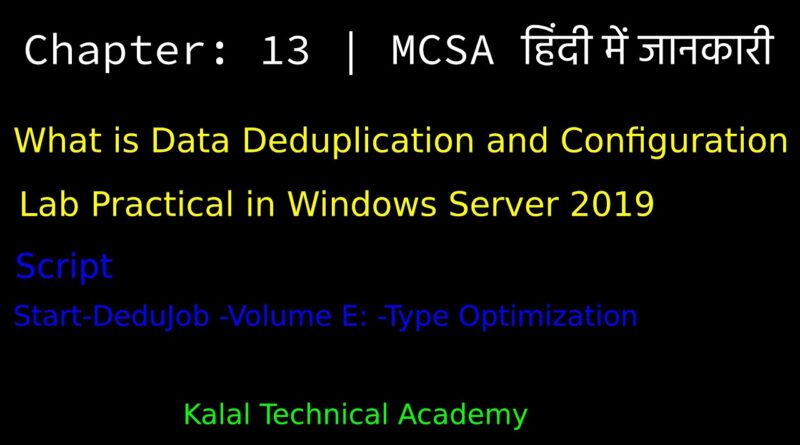Chapter 13 | What is Data Deduplication and How does it work in Server | MCSA हिंदी में | 70-740 🔥
Data Deduplication technology for data reduction and reduc storage cost by storing only unic data
In computing, data deduplication is a technique for eliminating duplicate copies of repeating data. A related and somewhat synonymous term is single-instance storage. This technique is used to improve storage utilization and can also be applied to network data transfers to reduce the number of bytes that must be sent.
Why is Data deduplication important?
Data Deduplication helps storage administrators reduce costs that are associated with duplicated data. Large datasets often have a lot of duplication, which increases the costs of storing the data. For example: User file shares may have many copies of the same or similar file
Equipment’s & Services I use:
Mic: Boya M1
What is data deduplication and why is it important?
At its simplest definition, data deduplication refers to a technique for eliminating redundant data in a data set. … Reducing the amount of data to transmit across the network can save significant money in terms of storage costs and backup speed — in some cases, savings up to 90%
What is the meaning of data deduplication?
Data deduplication is a process that eliminates excessive copies of data and significantly decreases storage capacity requirements. Deduplication can be run as an inline process as the data is being written into the storage system and/or as a background process to eliminate duplicates after the data is written to disk
MCSA Full Course-
Created By:
Rochak Kalal
Business Email:- kalaltechnicalacademy@gmail.com
#kalaltechnicalacademy #mcsahindi #datadeduplication #mcsafullcourse #windowsserver
windows server 2016



